A dejected Geelong team trudges off Optus Stadium last Saturday after its defeat against Fremantle. Photo: GETTY IMAGES
In these days of saturation coverage and forensic analysis of AFL football, no team is immune from being put under the blowtorch, not even one sitting on top of the ladder.
And that will be Geelong’s lot this week as the Cats digest a fourth loss in seven games since their mid-season bye.
After Geelong smashed an injury-crippled Richmond by 67 points in round 12, the Cats were two games and almost 25 points of percentage ahead of their nearest-rival. Now, they’re level on points with West Coast and Brisbane, and a percentage of 151 has fallen to 130. The prospect of having to head to either Perth or Brisbane for a first final is very much on the cards.
There will be a range of different theories thrown up as to what’s gone wrong. All could be valid. But it’s most unlikely one in isolation will provide the definitive answer. Because the Cats simply are a side out of form. And that usually covers a lot of bases.
There’s the way Geelong uses the football. An issue in the ruck. A forward set-up which has lost its spark. And a drop in form from a few key individuals.
It’s ball movement which is now being identified as the key to the Cats’ drop-off. But is it the speed at which Geelong uses the football, or the paths it takes towards goal?
There’s a slow, stagnant look about the Cats overall since the bye. But not all the time. Not even in Saturday’s disappointing loss to Fremantle. In Geelong’s five-goal first quarter, it rebounded with pace off half-back to a level it hadn’t displayed for weeks. It just couldn’t be sustained long enough.
And the numbers actually don’t show that great a change. Even after round 12, when it was 11-1, Geelong ranked last in the competition for percentage of playing on from a mark, at only 19.6 per cent. That figure has since fallen only a little further, to 18.8 per cent.
What the Cats have been is more boundary-centric, the long slow kick down the line preferred more often than some of the daring switches into the corridor that were happening earlier in the season.
That’s about mindset as much as anything, and the Cats going into their shells a bit more after a few setbacks, a bit of a chicken or the egg puzzle for coach Chris Scott to solve.
Rhys Stanley’s dramatic loss of form in the ruck has seen him dropped, replacement Zac Smith no more successful against Freo at the weekend. It hasn’t helped. But again, even at round 12, Geelong was only ranked 14th for clearances on the differentials.
As a team which doesn’t win a heap of clearances, Geelong has to rely on good contested ball numbers. They’ve fallen away enough for the Cats to lose their No.1 ranking in that category, the average 15.6 more contested possessions than their opposition dropping to 10.7 and a No. 2 ranking.
In terms of conversion of scoring opportunities, Geelong is still ranked No.1, averaging a goal from 26.5 per cent of forward 50 entries, that too down slightly from the 28.9 per cent which was the case after round 12. The Cats were the highest-scoring team in the competition after round 12 at an average 99.3 points per game. They’re now second behind Brisbane at an average of 90.1.
Which is where key personnel comes into the equation. Gary Rohan had quickly become a key part of the forward set-up, and along with Luke Dahlhaus and Gryan Miers, key to the more dynamic look Geelong had near goal.
Rohan booted 20 goals in his first nine games for the Cats. Injured a couple of times since, he’s only managed four goals in his last eight games. Dahlhaus’s forward line pressure has dropped off. Pre-bye, he was averaging more than five tackles per game. Post-bye, the number is three.
Miers is clearly feeling the pinch in his debut season of AFL football. His disposal average has dropped from 16 to 13. So has his scoreboard returns. Miers kicked 15 goals in his first 12 games. There’s been only four goals in seven games since the break, and he’s been goalless the last three weeks.
The big name trio of Patrick Dangerfield, Joel Selwood and Gary Ablett all had quiet days against the Dockers, though Ablett is the only of the band to suffer a significant fall in possession output since the bye, his disposal average falling from 21 to 17.
But the absence through injury of another far less-heralded player in Brandan Parfitt recently may have had just as significant an impact. Parfitt was a big part of the Cats’ earlier season midfield efforts, and is still ranked behind only Dangerfield, Joel Selwood and Tim Kelly for average contested ball numbers despite having played only three games since the bye.
And that’s perhaps symbolic of what Geelong has lost since the mid-season break, namely a more dynamic edge.
Parfitt and, earlier on, Charlie Constable, were giving the Cats a different look. Rohan, Dahlhaus and Miers had the same effect near goal. Jordan Clark has been good for Geelong on a wing, but shifted out of defence, the backline also has a “back to basics” feel with the presence of Zac Tuohy and Jed Bews. Ditto the midfield via the returns of Scott Selwood and at the weekend, Sam Menegola.
Hence the conundrum for Scott and the Cats. Geelong can’t afford to take gambles on injured and sore players, nor younger faces who have gone off the boil.
But the “tried and true” approach is what has had the Cats close but not close enough these past few years. And the changes to personnel and structure early this year which seemed to have shaken things up for the better.
Thus, Scott’s challenge over the last three rounds will be as much about “who” as “why”. With a short injury list, there’s potential options (and gambles) in the likes of Quinton Narkle, impressive in the VFL at the weekend, or Nakia Cockatoo. Both are exciting. But neither has played a single game in 2019.
The Cats might have to go back to the well in the ruck with Stanley. With the side and game style looking decidedly pedestrian, there might be some tough decisions to be made on either a Scott Selwood or a Menegola.
And ultimately, a bigger call, remembering his team still sits on top of the ladder, on whether Scott holds the fort and hopes form, confidence and with it, a greater sense of daring, can restore the winning ways, or whether a slump might be a warning of a more entrenched decline, and take more drastic action here and now.
Identifying any exact and specific problem for Geelong isn’t as easy as some experts this week will make out. And identifying an appropriate solution could be even more problematic.
*This article first appeared at SPORTING NEWS.

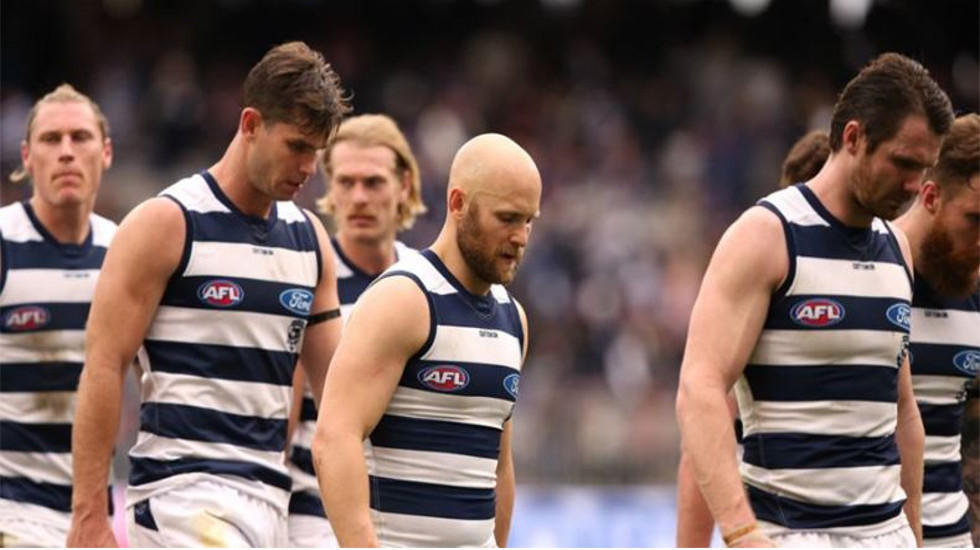
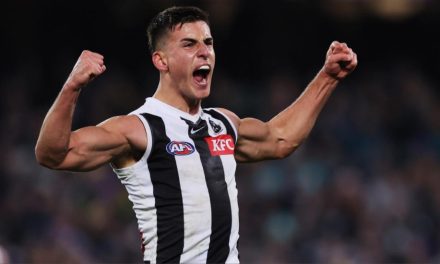
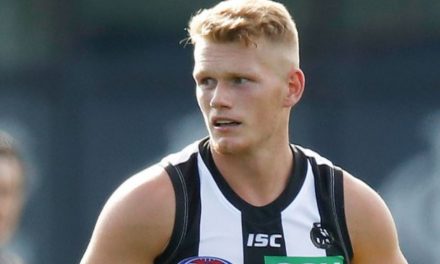

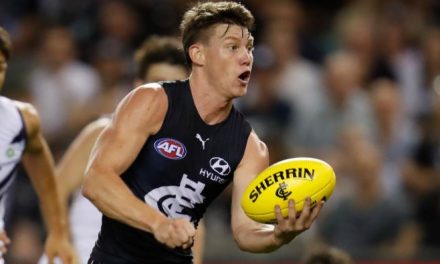




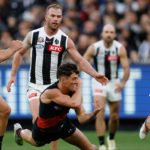

Interesting analysis, as a Cats fan I feel I’ve heard this song before regarding our previous 3 or 4 years. Start off well, play attractive footy for the first month or two and then we tinker and start to look average and peter out to a limp finals performance. I also don’t buy Scott’s yearly insistence that by the later rounds he still hasn’t worked out his best team. As he repeatedly states about sample sizes, I am sure 20 rounds of football would give you a good sample size from which your best team could be picked. I fear he is picking his best 22 players and shoehorning them into a team instead of picking a team with some players missing out.
Also the ruck has been an issue since Ottens retired.